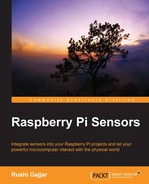One of the most powerful and widely used cross-platform libraries for image processing is OpenCV, which can run on any hardware or software platform. It can be installed on the RasPi to get functionality such as face detection, finding contours, gesture recognition, motion tracking, 3D depth perception using two cameras, and many more complex algorithms for machine learning. OpenCV stands for Open Source Computer Vision. It was developed by Intel. It is basically written in the C++ language and can have full interfacing with Python, Java, or MATLAB. Check out http://opensource.org for the list of available open source libraries. With aiming for computational efficiency in mind, OpenCV is designed to work with multicore architectures. Writing OpenCV in C and C++ is common across the globe among image processing experts. OpenCV can also be written in the Python language, as the library has full development and supports functions in the Python script.
Computer vision is a quickly growing field because of cheaper and advanced cameras and inexpensive processing-capable hardware. OpenCV provides productivity for professionals in achieving the best results in the field of vision processing. Initially, image processing was only possible in research labs due to its rare availability on open source platforms and dedicated hardware. Nowadays, students, researchers and professionals can easily use the fully developed and growing library known as OpenCV. OpenCV, at the time of writing this book, is of version 3.0 Beta, with approximately 9 million downloads.
